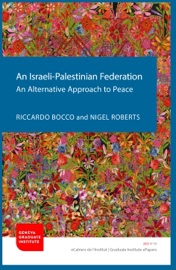
Over a year since Hamas' attack on Israel on October 7, 2023, led to the devastating ongoing war in Gaza, the Israeli-Palestinian conflict seems as far from resolution as it ever has been. This paper suggests a possible pathway towards ending the conflict, not as an immediate solution, but as a viable option once the parties are motivated to seek compromise. The paper begins by arguing that the two-state solution championed by diplomats from the end of the 1967 Arab-Israeli war to this day is no longer realistic. The Oslo Accords that aimed to implement this vision did not deliver, due to continuous violence, accelerated settlement construction in the West Bank and a persistent failure to resolve the key 'Permanent Status' issues (borders, Israeli settlements, security arrangements, Palestinian refugees, the status of Jerusalem). Oslo did nothing to halt the expansion of Israeli West Bank settlements, the population of which, at some 700,000, is three times what it was thirty years ago; nor has it done anything to resolve the plight of the Palestinian refugees, whose numbers have doubled to almost 6 million since the 1990s. Extremism has overwhelmed moderation in both societies, and the brutality of the past year only underlines the futility of continuing to pursue an Oslo-style two-state approach. The authors argue that there are three broad options: a continuation of a deteriorating status quo, a one-state unitary solution, or a confederal/federal approach. The first two have little promise. Maintaining the status quo means sustained violence and suffering, and a further erosion of Israel’s international standing and moral capital. Promoting the notion of a unified democratic state of Israelis and Palestinians in today's inflamed climate is seen by most Israelis as advocating the end of the Jewish homeland, and will gain no traction in Israel. This leaves the option of some kind of federation of the two peoples: one that preserves their distinct identities and self-rule, while sharing essential common functions like defense, foreign relations, monetary policy and the management of the economy and water/the environment. A distinction should be made between citizenship of the federation (available to all Israelis, all Palestinians currently resident in the West Bank and Gaza, and all UN-registered Palestinian refugees), and residency of each territory. Israelis, as residents of the Israeli territory, would elect representatives to an Israeli parliament, while Palestinians, as residents of the Palestinian territory, would elect representatives to a Palestinian parliament. A single, balanced federal chamber is proposed, with delegates either directly elected by each territory or appointed by the territorial governments/parliaments. A federation offers practical possibilities for addressing two major stumbling blocks to peace: Israeli settlements and the return of Palestinian refugees. Two options are worth considering. Under the first, any federal citizen would have the right to live anywhere in the federation but would remain, for federal and territorial voting purposes, a resident of their 'own' Israeli or Palestinian territory, while bound by the laws and local taxes levied in the territory in which they live. A variant of this would allow a more limited number of Israeli settlers to remain in the West Bank, while also permitting refugees who lived in Israel before 1948 to return to the Israeli territory. Either option would ensure that Israelis and Palestinians maintain control of their 'own' respective territories.Nearly 50 percent of the world’s population lives in some kind of federal or confederal arrangement (e.g. Brazil, the USA, the European Union). In all federations, the exact division of powers between individual member territories and the larger union is specified in a written constitution—as are the mechanisms for...